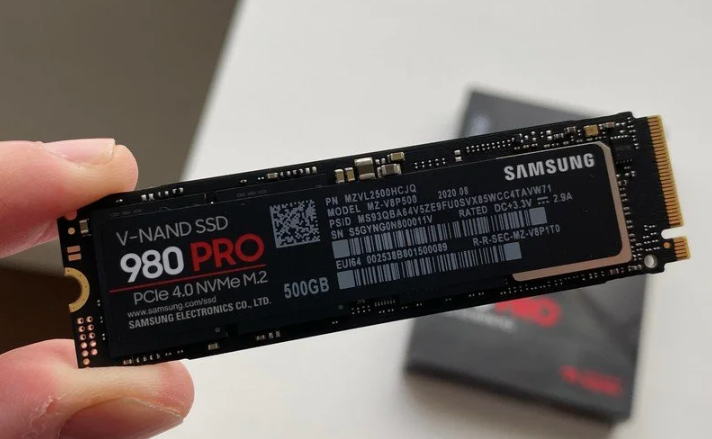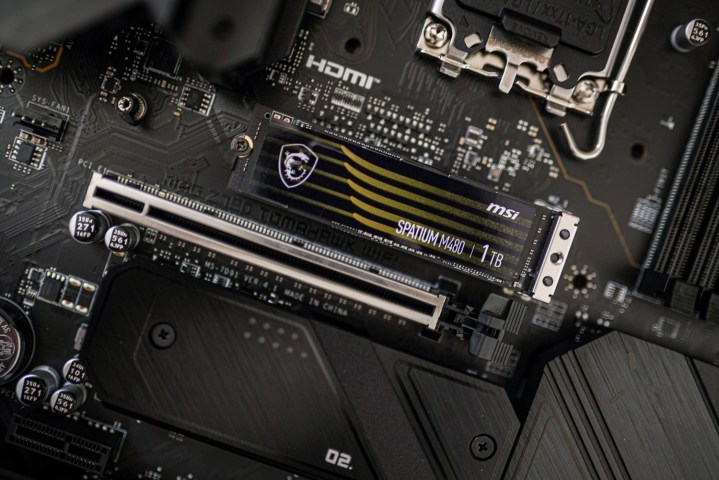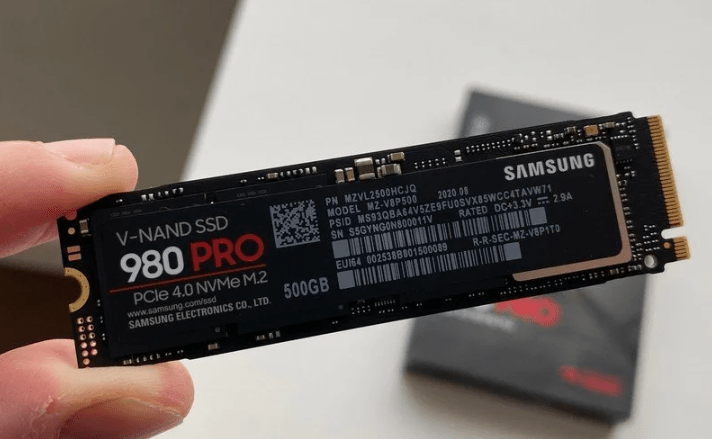
If you want fast and reliable storage, there’s no question — you should get a solid SSD, and if you pick a good one, it might serve you well for years. However, by definition, SSDs don’t last forever. The NAND flash memory that powers them only has a finite number of write and erase cycles, which means that over time, your SSD will fail.
The question is, how long do SSDs really last? Do you need to worry about that when you shop, and what are the signs to look out for? We’ll explore all of that and more in this article.
How long do SSDs last?

On average, many SSDs may function well for five to 10 years before showing signs of failure. However, this estimate can change depending on the particular SSD in question. Things that may prolong or shorten the lifespan of an SSD include the type of NAND flash memory it uses, the workloads it handles, and how often (and how heavily) it’s in use.
For something that’s responsible for storing data, there’s surprisingly little intel on the average lifespan of an SSD. Although SSDs may function well for up to 10 years, the average SSD will fail sooner than that, and recent studies claim that SSD failure becomes likelier with time more so than with usage. Long story short: It’s OK if you use your SSD a whole lot every day. Time alone will still do its work whether you use it lightly or not.
According to a research paper from by Bianca Schroeder of the University of Toronto and Google’s Raghav Lagisetty and Arif Merchant, NAND flash drives have a much lower replacement rate than good old HDDs. In the early days of consumer SSDs, some people claimed that they’d be much less reliable than HDDs, but this turned out to be a common PC myth. On the other hand, that same study found that SSDs get more uncorrectable errors and bad blocks than HDDs, which doesn’t necessarily lead to total drive failures. It’s more about degradation over a certain period of time.
Backblaze, a cloud storage and backup company, also shares some interesting insights on SSD reliability by publishing mid-year reports. In mid-2023, the company was using a whopping 3,144 SSDs in its storage servers. In the second quarter of 2023, out of those 3,144 SSDs, only eight failed. The company’s annualized failure rates (AFR) hovered between 0.36% and 1.72%.

What’s perhaps more interesting is that Backblaze also calculated the average age of failure for its SSDs. In the 2023 report, the company encountered a total of 63 failed SSDs. Taking into account power-on hours (POH), Backblaze determined that the average age of an SSD was just 14 months. But this data is misleading — the average SSD age in Backblaze’s entire fleet is just 25 months. With time, the average age of SSDs at the time of failure will likely increase.
Wanting to determine just how long SSDs last is especially difficult because almost every single study talks about SSDs in the context of data centers, not consumers. It’d be hard to measure the exact average lifespan of a consumer SSD, study or not, because there’s more to it than just time, although it does seem like time plays the biggest role.
Another thing to keep in mind is that many SSDs will just never fail. You’ll sooner replace your entire system than see the SSD die. Some SSDs will fail and some won’t, and there’s no easy way to predict what will happen to yours.
What contributes to the lifespan of your SSD?

Although the lifespan of an SSD might seem fairly ambiguous, every SSD has an estimated amount of data it can handle before it’s at risk of failing. Let’s break it down.
TBW, DWPD, and MTBF
When you shop for an SSD, you’ll often see various specs that estimate how long the SSD should function before things go south: terabytes written (TBW), drive writes per day (DWPD), and mean time between failures (MTBF). Some manufacturers will list just one of those metrics, while others may list all three. This is why determining how long an SSD can last is not an exact science — after all, each of those metrics refers to something else.
TBW is a measure of the total amount of data that can be written to your SSD before it wears out. This is the most commonly used metric that represents the endurance of an SSD, but in reality, it’s unlikely that you’ll ever hit that cap. Many of the best SSDs currently available have TBW ratings that reach 1,200TB and above. Assuming that you write 100GB of data per week to your SSD — which may not be much on some weeks, but should be plenty on most weeks — your TBW will run out after 230 years of continuous usage.
In short: High TBW is good because it translates to better endurance, but you’re unlikely to ever exceed the TBW on any SSDs. Even older drives with a modest 300TB TBW will last for years and years with normal usage.

DWPD is another metric used to gauge the endurance of your SSD. It indicates how many times the entire capacity of the SSD can be written to per day over the warranty period of the drive. For example, the Samsung 990 Pro 2TB offers a five-year warranty and has a DWPD rating of 0.3. This means that you can write up to 600GB per day for five years before you use up the entire limit.
MTBF, on the other hand, is a reliability metric that refers to the time between failures, measured in hours. In an SSD, it simply estimates how likely it is that your SSD will die during normal operation. The aforementioned Samsung 990 Pro has an MTBF of 1.5 million hours, meaning that it’s expected to run fine for 1.5 million hours before it might fail. That’s 171 years, which, again, is a crazy number.
For all of those metrics, it’s important to remember that they’re statistical measures that don’t guarantee that your SSD will live for that long. (Without the help of our robot overlords, none of us will be around to see what happened to our SSDs in 230 years, anyway.)
It’s just an estimate, and some SSDs will fail in a year while others won’t fail at all and will simply be replaced at one point.
Age
All metrics aside, the age of your SSD is the determining factor in how long it’ll last. You’re unlikely to ever exceed the TBW in a modern SSD, but time and usage alone will wear it out. It all comes down to the endurance of the oxide layer in the NAND flash memory used in an SSD, which deteriorates with each program/erase (P/E) cycle. The NAND cells in your SSDs are affected by each and every P/E cycle, and eventually, they’ll wear out. As more and more NAND cells wear out, your SSD’s ability to store data will be diminished.
A drive under heavy usage is therefore likelier to wear out sooner, but one day, the SSD will wear out one way or another. Most SSDs come with a limited warranty of three to five years — the rest is up to luck and usage.
Type of NAND flash memory

Another reason why it’s hard to estimate the average lifespan of an SSD is that there’s no universal type of SSD to refer to. Depending on the NAND flash memory used in a particular SSD, it may have a higher or lower predicted number of write cycles.
The term NAND refers to a non-volatile type of flash memory that continues to store your data even when you turn your PC off. This makes it different from RAM, which is volatile and doesn’t retain any data after you sign out for the day. NAND is also what sets SSDs apart from HDDs, which use spinning magnetic disks to store data, which makes them slower and more prone to physical damage.
The types of NAND flash memory in SSDs are:
- SLC (Single-level cell): This type of NAND only really appears in enterprise SSDs, such as those used in data centers. It only stores one bit of information per cell, making data retrieval quicker, and its endurance the highest with an estimated 100,000 P/E cycles (according to Kingston).
- MLC (Multi-level cell): While the name implies that this type of NAND stores several bits per cell, it’s most commonly used for two bits per cell. The higher data density means that it’s easier to produce in larger capacities, but it’s only rated to last a maximum of 10,000 P/E cycles. Consumer-grade MLC SSDs may have a lower endurance rating, though.
- TLC (Triple-level cell): You guessed it — this type of memory stores three bits per cell. This is the most popular type of NAND in consumer SSDs right now, with a good crossover between performance, price, and durability. It can handle 3,000 P/E cycles.
- QLC (Quad-level cell): QLC NAND stores four bits of data per cell, increasing storage density at a huge cost to endurance, with a rating of just 1,000 P/E cycles.
Some manufacturers started using a technique called 3D NAND, increasing density and storage capacity without making the SSD itself bigger. This technology can be used with any type of NAND, from SLC to QLC. Some SSD specs only list “3D NAND” without specifying the type, but if you dig deeper, that information can usually be found on the manufacturer’s website.
Most SSDs these days come with TLC NAND, which makes them more affordable, but less durable.
Signs of SSD failure

If your SSD is failing, it’s usually very easy to see. Over the years, I’ve only seen one SSD fail before it was replaced, but it was clear as day. The computer slowed down to unbearable levels, so much so that launching Chrome took over 30 minutes. Checking the Task Manager revealed that the disk was running at 100% even when nothing else was open. Luckily, I was able to catch this before the point of no return and retrieve the data before getting rid of that SSD.
Here are some signs to keep an eye out for:
- Frequent crashes, especially during boot
- The SSD switching to read-only mode
- Frequent file system errors
- Slow performance
- Data corruption
- Blue screens of death (BSOD)
- Freezes and unresponsiveness
- SMART errors, such as notices about bad data blocks or reallocated sectors
It’s important to remember that losing your SSD may cost you all of your data. That’s why backing up is so important, but also periodically testing your SSD for signs of failure is a good idea. It’s best to act before you notice any signs of failure, as this may give you some time to transfer your data elsewhere and buy a replacement drive.
Services Marketplace – Listings, Bookings & Reviews
